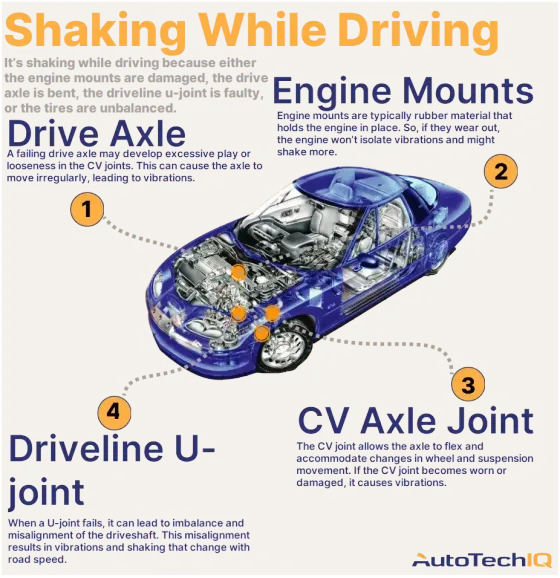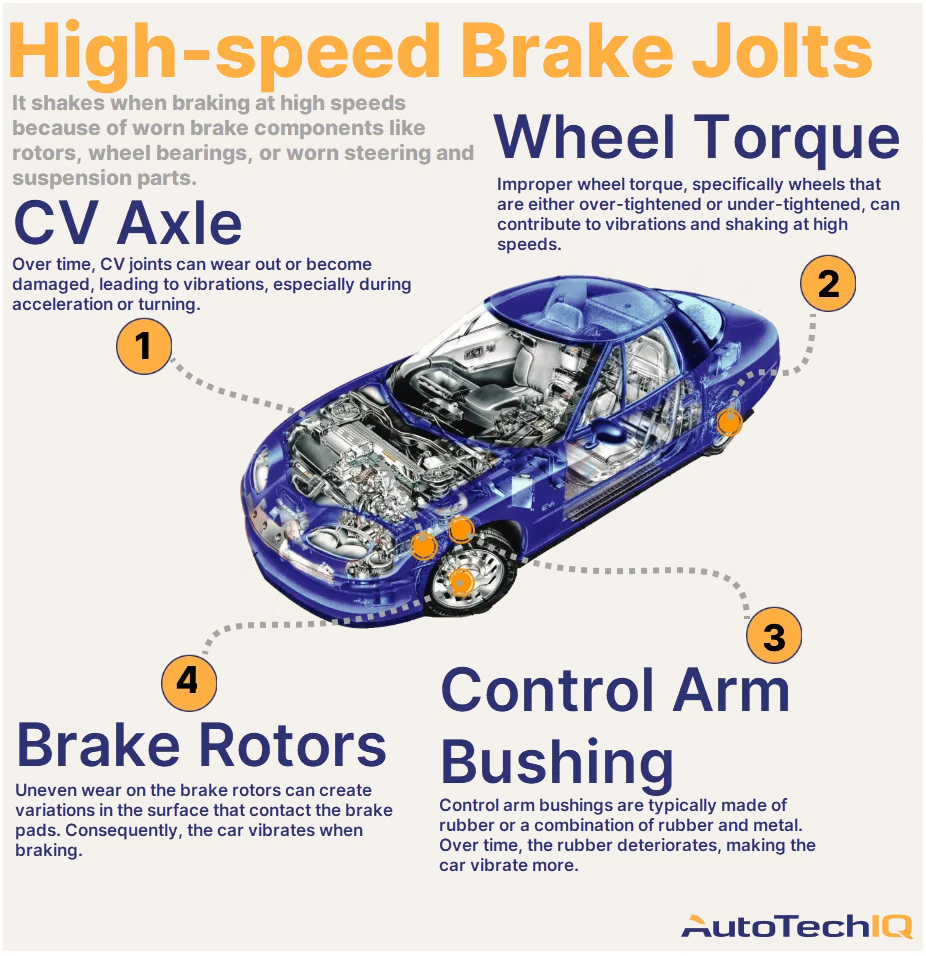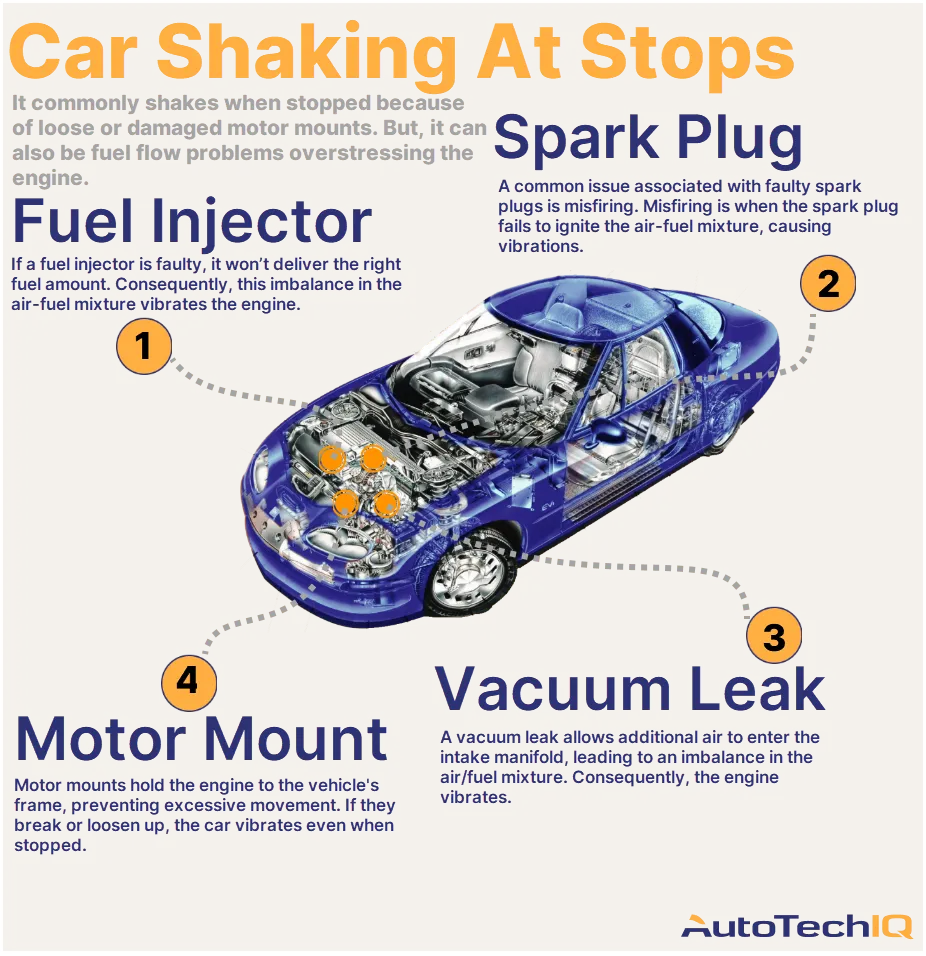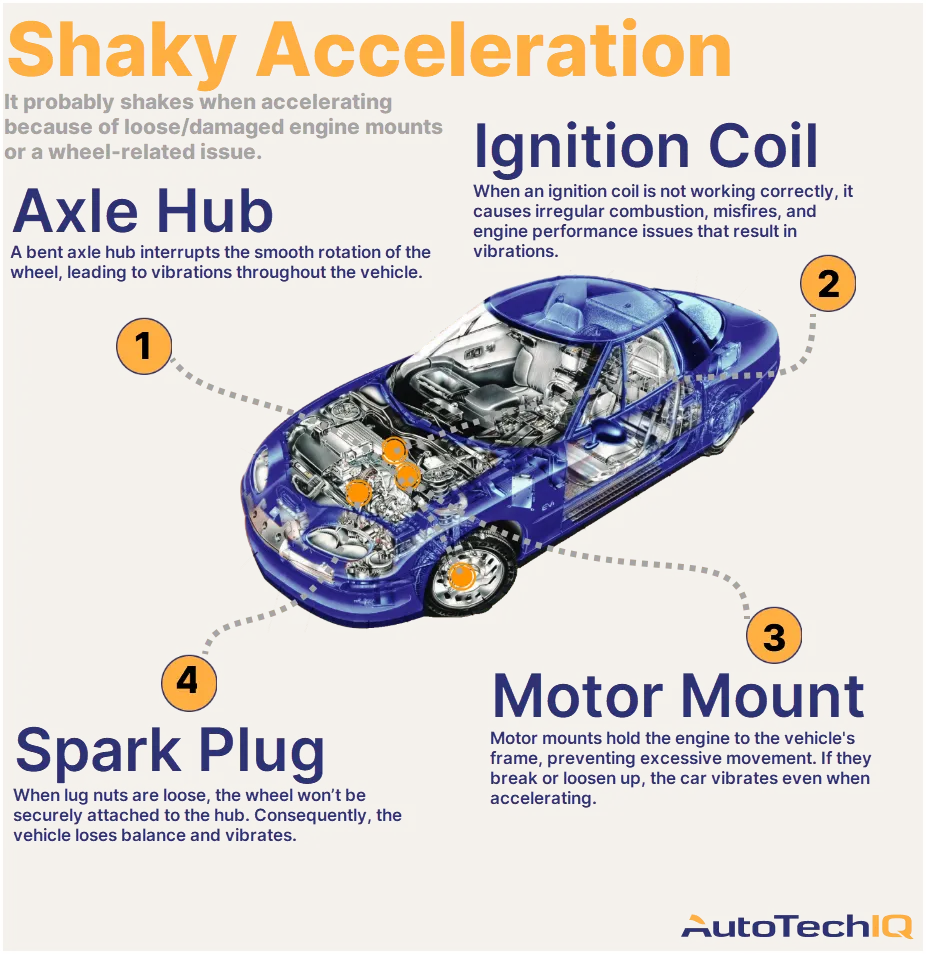
Is Your Car Shaking While You Drive?
It’s shaking while driving because either the engine mounts are damaged, the drive axle is bent, the driveline u-joint is faulty, or the tires are impaired or unbalanced. It can also be a cv axle joint problem. Any of these problems affect stability and commonly create the exact symptom you’re getting.
Addressing any shaking issues immediately is crucial to avoid potential hazards while driving. Ignoring the problem can cause further damage to your car, making repairs more costly and extensive.
Therefore, if your car shakes while driving, consider having it inspected by a qualified mechanic as soon as possible to determine the cause of the shaking and make necessary repairs.
Watch out: A car shaking while driving on the road can be pretty concerning. This shaking can indicate various issues, such as unbalanced wheels, worn or damaged tires, or problems with the suspension system. These issues can make it challenging to control your vehicle, putting you and your passengers at risk.





